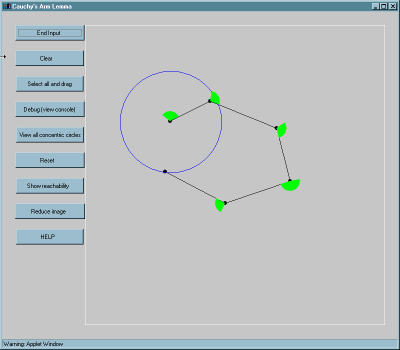
Research supported by National Science Foundation grant CCR-9731804. Views expressed are those of the authors, and do not necessarily reflect those of the NSF.
The generalization of this lemma permits opening of the angles beyond pi, as far reflex as they were originally convex. The conclusion remains the same: e cannot shorten.
This theorem can be derived from Chern's proof1 of a theorem of Axel Schur2, employing differential geometry, or, independently, by induction [O'R00].

The turn angle ranges are displayed in green, and the "forbidden shoulder circle" is drawn in blue. The user may then turn any joint of the chain by double-clicking on it and dragging the next link,
which rotates the (red) subchain beyond that link as rigid unit:
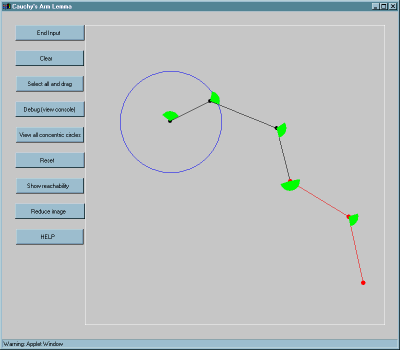
The theorem says that no reconfiguration within the allowable turn angle ranges will permit the hand to enter the forbidden circle:
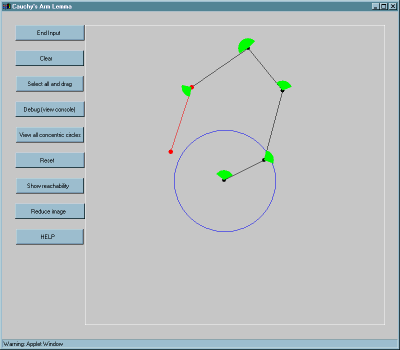
A corollary says that every joint has a correspoding forbidden circle, which can be viewed by selecting:View all concentric circles
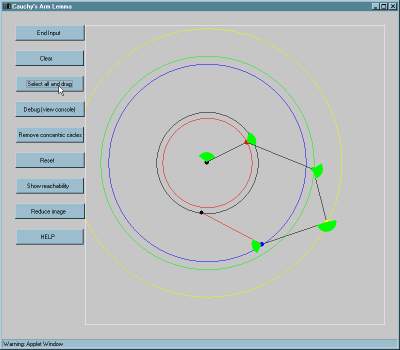
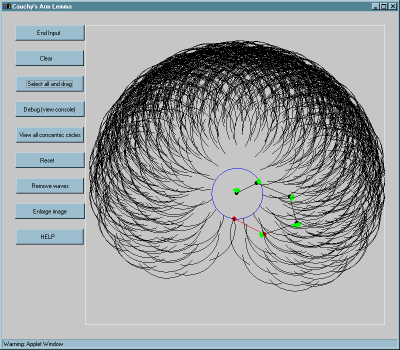
For more details, see the paper [O'R00].
| Platform | OS | Browser | |
| Internet Explorer | Netscape Communicator | ||
| PC | Windows 9x, WindowsNT4 | IE v4: No reported problems at above resolutions. | NC v4.7: No reported problems on above resolution. |
| Red Hat Linux 6.1 | Not tested. | Netscape v4.61 for Linux. No reported problems. | |
| MAC | MacOS 8.5 | IE v4: No reported problems at above resolutions. | Some Mac versions of Netscape do not support the Java1.2 event model, which is used extensively on the applet. Therefore, IE is recommended for the Mac |
| SGI | Irix 6.x | Not tested. | Tested on Netscape 4.07. Reported problems are:
|